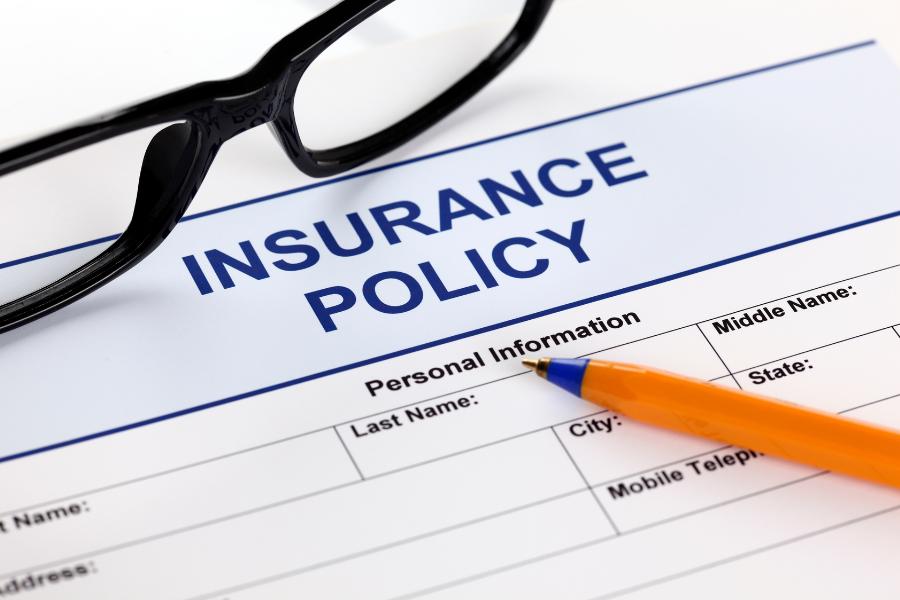
A restaurant profit margin is the amount of money you make as a business, expressed as a percentage of your annual sales. The average restaurant margin percentage for most restaurants ranges from 3%-5%, depending on your business type.
For financial health and overall success, improving profit margins should be top of mind for every restaurant owner. In this article, I break down how to track and increase restaurant profit margins and provide tips on this crucial piece of your restaurant’s financial puzzle.
Key Takeaways
- The restaurant profit margin indicates how much of the money you have earned through sales actually goes to your bottom line.
- The average profit margin for restaurants sits between 3%-5%.
- Increasing your restaurant profit margin takes time but is actionable through many different levers in your business.
A restaurant’s profit margin indicates how much of the money it earns in sales goes to its bottom line. This information is critical when conducting a restaurant financial audit.
There are two ways to look at your restaurant profit margin: gross restaurant profit margin and net restaurant profit margin. Let’s look at both individually.
Gross Profit Margin
Gross profit margin is determined by subtracting your overall cost of goods sold (COGS) from your overall sales. Basically, a gross profit margin is the cost of what it takes to make your dish subtracted from the dish’s sale price. Around 70% is the ideal gross profit margin since 30% is a good food cost goal for your business.
You can use this figure to see how you manage costs—where you need to trim costs and how they affect your bottom line—and how you could increase profit through sales.
How to Calculate Gross Profit Margin
To determine gross profit margin, subtract your COGS from your gross sales. So first, you need to calculate your COGS. The formula for finding this is as follows (note that you should utilize inventory counts to ensure an accurate representation of the cost of your menu items).
COGS = (Beginning Inventory + Inventory Purchased) – Ending Inventory
From there, you can calculate your gross profit margin:
Gross Profit Margin = [(Revenue or Total Food Sales – COGS or Total Food Cost) / Revenue] x 100
For example, let’s say your revenue is $186,000 and your cost of goods is $100,000. Calculating your gross profit margin would look like:
100,000 – 30,000 = 70,000
70,000 / 100,000 = 0.7
0.7 x 100 = 70% Gross Profit Margin
These numbers will change, and the profit margin percentage can look very different for each business.
Net Profit Margin
Net restaurant profit margin is the money you keep as a business owner after all expenses, taxes, and business fees are paid. It is useful in determining just how much pure profit you are making from operating your restaurant or food business. Net profit margin is also useful for assessing if your expenses are in line with your business level or if you need to decrease some controllable expenses to begin turning a profit.
An important note on costs vs expenses: Cost is a controllable monetary piece of your monthly financial picture that you pay one time, such as on ingredients or paper goods. An expense is a recurring payment that does not fluctuate much and often leads to revenue generation, such as rent.
How to Calculate Net Profit Margin
The net profit margin equation requires a little more information but again, is relatively easy. First, you will need to find the net profit. The net profit follows an equation that sees revenue and gains added up. Once added up, you subtract the expenses of your business from this number. For example, here is the formula:
Net Profit = [(Revenue + Gains) – Expenses] x 100
So if revenue is $200,000, gains are $30,000, and costs are $220,000, you would do the following:
(200,00 + 30,000) – 220,000 = 10,000
Once you have this figure, then finding the net profit margin percentage is relatively easy with the following formula:
Net Profit Margin Percentage = (Net Profit/ Revenue) x 100
So then, in our example, the following would be true:
(10,000/200,000) x 100 = 5%
This is how you calculate the net profit margin in a restaurant. The formula for this is easy, as long as you have accurate information that is accessible to collect.
Average Profit Margin by Restaurant Type
Profit margins vary across restaurant types as differing product types (like alcohol) and levels of ingredient quality yield different revenue amounts. Below are the common profit margin percentages for different restaurant types.
- Full-service Restaurant: The average profit margin for a full-service restaurant is 3-5%. This has been the standard in the food industry for many years, though maintaining this slim percentage has been a battle amid rising costs and prices.
- Quick Service/Fast Food Restaurant: The estimated average profit margin for quick service restaurants falls between 6%-9%. This is due to the relatively lower cost of goods and better overall menu item margins compared to a full-service restaurant.
- Fine Dining: The average profit margin for fine dining restaurants is between 10% and 15%. Fine dining restaurants are typically able to charge more due to their perceived value and providing a personalized dining experience.
- Bars: The average profit margin for a bar is 10%-15%. Alcohol has better margins at scale than raw ingredients because customers are willing to pay more for it and it has a longer shelf life.
- Catering: The profit margin for a catering business typically falls in the range of 7%-8% based on costs and pricing models.
- Bakeries/Cafes: The typical profit margin percentage for a bakery or cafe is 4%-9%, depending on what you make in-house and the pricing you determine for your in-house offerings.
- Food Trucks: The typical food truck makes a profit margin of 3%-8% based on the type of food, amount of labor on the truck, and menu pricing.
Top 10 Tips for Increasing Restaurant Profit Margin
Increasing a restaurant’s profit margin requires hard work, detailed tracking, and patience to see long-term results. The fortunate part of increasing restaurant margins is that you can use many different levers to improve your restaurant’s profit margin. Below are some of the most effective ways to ensure your profit margin increases over time.
1. Increasing Your Cover Count
A cover count is the number of singular customers you serve in your restaurant on a given night. This depends on the amount of seats you have available, your hours of operation, and the general length of meals each customer can expect to experience in your restaurant.
When you increase your cover count by ensuring more reservations and serving more guests, your overall revenue will grow, giving you more room to lower costs and work on making individual high-sellers more cost-efficient. With increased sales, higher-profit menu items can then be sold at a higher rate, increasing what your business brings home.
2. Increase Turns During Your Service
A “turn” is the phrase used when you convert a table in your dining room from one group of guests to another. Many restaurants do not plan out how they serve customers throughout the night, leading to inefficiencies in how they seat guests, which impacts the number of customers they can serve and the amount of checks being placed in your business. Ensuring your seating of customers, your process in moving a meal along, and your ability to maximize your space and business hours is a surefire way to help improve your restaurant’s margin.
3. Generate Higher Average Check Value
A check average is the amount on average a customer is paying for a meal. Increasing check averages comes from creating a menu that incentivizes customers to order more, training service staff to upsell menu items, and creating dishes and drinks that are crave-worthy. Having higher overall check averages increases your revenue and profit potential, as you make more money per customer. If you are not maximizing your check values, you are using that same space and spending the same amount of time without the same amount of money-earning potential at your disposal.
Related: How to Increase Average Checks for Restaurants
4. Ensure Your Costs are Low
As you saw in the equations above, a large part of determining your profit margin is by utilizing the amount it takes to actually make the food and serve the drinks you offer in your restaurant. Ensuring costs such as food costs and liquor costs are hitting their targets is key to making more of a profit on your business. Furthermore, managing labor costs and overall overhead costs by practicing as a business in good standing can help lower your spending in the long run. When it comes to lowering costs, having solid business processes, ensuring financial bookkeeping is organized, and being diligent in your financial goals is key.
5. Manage & Train Effective Staff
An untrained and unorganized staff can lead to higher costs, contributing to a lower profit margin. Cooks who mess up recipes and servers who cannot take orders consistently and correctly end up costing your business a lot of money. This all comes down to a lack of training, and having solid training programs built out ensures fewer mistakes and a better overall product.
This is why good restaurant management is such a crucial part of the success of your business. Furthermore, staff turnover is one of the most expensive aspects of operating a food business. With structured training and consistent professional development, your staff will perform well, stay longer, and be bought into helping your business succeed.
6. Optimize Your Pricing
Another key factor to maximizing revenue is ensuring your pricing is up to date and reflects a realistic amount your customer will pay. If your food prices are too high, you will attract fewer people who will consider dining at your restaurant. But if you have your menu prices set too low, you will not make enough to cover the costs it takes to make those menu items. A periodic review of your pricing ensures that you cover your costs and hit your financial goals while also being suitable for your customers.
Related: Menu Pricing Strategies
7. Boost Marketing Efforts
One major key to ensuring you are filling your dining room and serving the most customers possible is marketing your business to your local community. A large hurdle restaurants, especially newer restaurants, can face is exposure. With effective consumer marketing, you will drive more business, which will give you more opportunities to increase your overall profit margin.
Related: Restaurant Marketing Ideas
8. Add Revenue Streams
Another proven way to increase your profit margin is to find different business channels for your restaurant. If you do not offer takeout, then opening your restaurant up to this can drive further business for a channel that can cost much less than in-person dining. Offering your meals as ready-to-cook options or packaging and selling your in-house goods can be another way to increase revenue through a new business channel. Restaurants can be very creative in how they sell to their customers, and the successful ones are multi-dimensional in what they offer.
9. Negotiate Lower Overhead Costs
Negotiating lower costs is sometimes a full-time business for a restaurant owner. Negotiating better lease terms with your landlord is a key step that can help increase the restaurant’s profit margin over time. Or bargaining on fixed supplier contracts with your different suppliers can make the costs of goods you bring in relatively cheaper. Finally, avoiding lease contracts that require a portion of revenue to go to the landlord can help you and your staff pocket more money in the long run.
Related: Guide to Restaurant Suppliers
10. Offer a Consistently Great Hospitality Experience
The last tip I have for increasing your profit margins is to offer an excellent food and beverage experience to every customer who walks through your door. The businesses in this industry that succeed are those that can day in and day out provide quality experiences that make their customers come back for more. By being consistent and gaining a reputation as a great food business, you will generate consistent income and over time be able to serve your guests in more productive ways, ensuring the financial growth of your business.
Frequently Asked Questions (FAQs)
There are a lot of questions food operators have when it comes to boosting profit margins. Here are some of the most common questions asked regarding restaurant margins.
It is important to note that the relatively standard profit margin for the average restaurant lies between 3%–5%. That being said, any profit margin between 5%–10% would be considered a good profit margin. Based on that, a profit margin of 10%–15% or higher is considered an excellent profit margin for a restaurant.
Restaurants historically have lower profit margins than other businesses due to the volatility of overhead costs they have to manage. Ingredient prices, labor, and other restaurant-specific costs make owning and operating a restaurant a higher-cost, lower-profit business model overall. With the fluctuation of cost and the relatively lower price point on most food and drink menu items, restaurants are a business model where profit margins can only be so large.
Restaurant profitability averages 3%–5%, with some more successful ones making up to 15% profit. This may seem low, and that is due to the higher overhead costs and overall volatile nature of owning a restaurant. With that being said, restaurants can be profitable when many locations are opened or your concept generates a larger volume of business.
Bottom Line
When trying to improve a restaurant’s profit margin, there are many levers you can pull. By creating a more efficient, organized, and better overall product, your restaurant’s profit margin will naturally grow. Use the tips in this article to implement systems into your business that ensure more profits for you and better experiences for your customers.





